雅思考试主要是通过对考生听、说、读、写四个方面英语能力的考核,综合测评考生的英语沟通运用能力,实现“沟通为本”的考试理念。对于雅思考生来说,也有很多考试难点和政策盲区需要帮助解答。今天雅思无忧网小编准备了雅思作文之漫谈标点符号在雅思写作中的用法,希望通过文章来解决雅思考生这方面的疑难问题,敬请关注。

Period [.]
1. Use a period to show the end of a sentence.
Hockey is a popular sport in Canada.
The federal government is based in Ottawa.
2. Use a period after certain abbreviations.
B.C. is the province located on the West Coast.
Dr. Bethune was a Canadian who worked in China.
The company is located at 888 Bay St. in Toronto.
It is 4:00 p.m. in Halifax right now.
Question Mark [?]
Use a question mark at the end of a sentence to show a direct question.
How many provinces are there in Canada?
Note: do not use a question mark for indirect questions.
The teacher asked the class a question. Do not ask me why.
Exclamation Mark [!]
Use an exclamation mark at the end of a sentence to show surprise or excitement.
We won the Stanley Cup!
The forest is on fire!
Comma [,]
1. Use a comma to show a pause in a sentence.
Therefore, we should write a letter to the prime minister.
2. Use a comma with quotation marks to show what someone has said directly.
"I can come today," she said, "but not tomorrow."
3. Use commas for listing three or more different things.
Ontario, Quebec, and B.C. are the three biggest provinces.
4. Use commas around relative clauses that add extra information to a sentence.
Emily Carr, who was born in 1871, was a great painter.
Apostrophe [']
1. Use an apostrophe to show ownership of something.
This is David's computer.
These are the player's things. (things that belong to the player)
Note: For nouns in plural form, put the apostrophe at the end of the noun.
These are the players' things. (things that belong to the players)
2. Use an apostrophe to show letters that have been left out of a word.
I don't know how to fix it.
Quotation Marks ["]
Use quotation marks to show what someone has said directly.
The prime minister said, "We will win the election."
"I can come today," she said, "but not tomorrow."
Colon [:]
1. Use a colon to introduce a list of things.
There are three positions in hockey: goalie, defence, and forward.
2. Use a colon to introduce a long quotation.
The prime minister said: "We will fight. We will not give up. We will win the next election."
Semicolon [;]
1. Use a semicolon to join related sentences together.
The festival is very popular; people from all over the world visit each year.
2. Use a semicolon in lists that already have commas.
The three biggest cities in Canada are Toronto, Ontario; Montreal, Quebec; and Vancouver, B.C.
Dash [-]
1. Use a dash before a phrase that summarizes the idea of a sentence.
Mild, wet, and cloudy - these are the characteristics of weather in Vancouver.
2. Use a dash before and after a phrase or list that adds extra information in the middle of a sentence.
The children - Pierre, Laura, and Ashley - went to the store.
Most Canadians - but not all - voted in the last election.
3. Use a dash to show that someone has been interrupted when speaking.
The woman said, "I want to ask - " when the earthquake began to shake the room.
Hyphen [-]
1. Use a hyphen to join two words that form one idea together.
sweet-*elling
fire-resistant
2. Use a hyphen to join prefixes to words.
anti-Canadian
non-contact
3. Use a hyphen when writing compound numbers.
one-quarter
twenty-three
以上就是雅思无忧网为您准备的访问雅思无忧网(https://www.yasi.cn/),了解更多雅思考试新消息,新动态。
雅思培训
免责声明:文章内容来自网络,如有侵权请及时联系删除。


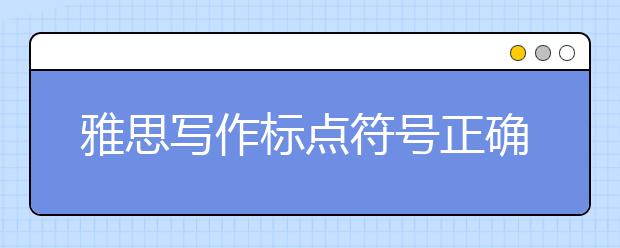 雅思写作标点符号正确使用方法
雅思写作标点符号正确使用方法
 雅思写作标点符号错误会不会扣分呢
雅思写作标点符号错误会不会扣分呢
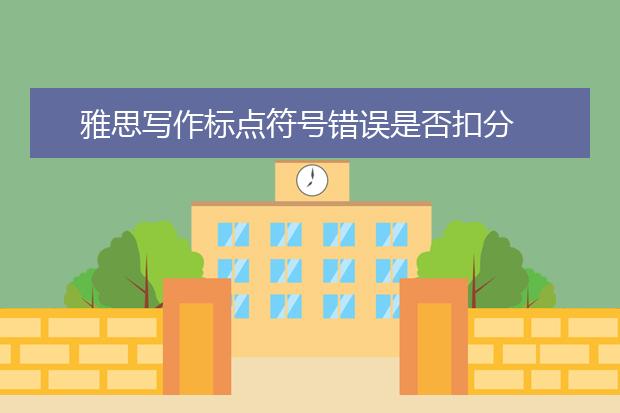 雅思写作标点符号错误是否扣分
雅思写作标点符号错误是否扣分
 标点符号在雅思写作中的妙用(下)
标点符号在雅思写作中的妙用(下)
 标点符号在雅思写作中的妙用(上)
标点符号在雅思写作中的妙用(上)
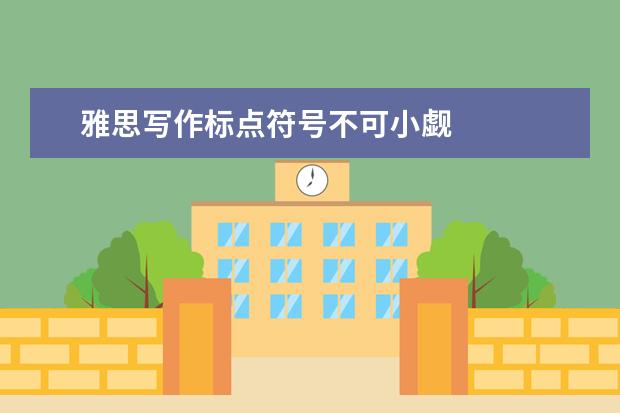 雅思写作标点符号不可小觑
雅思写作标点符号不可小觑
 雅思写作标点符号错误是否扣分
雅思写作标点符号错误是否扣分
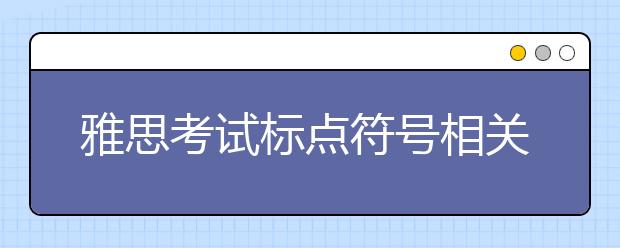 雅思考试标点符号相关英语词汇及表达
雅思考试标点符号相关英语词汇及表达
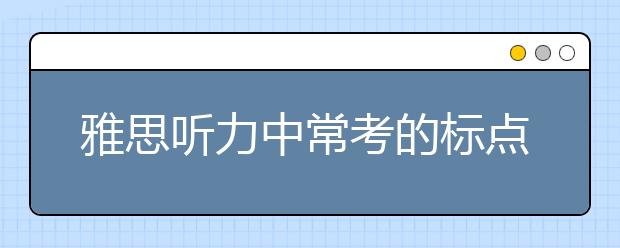 雅思听力中常考的标点符号及对应词汇
雅思听力中常考的标点符号及对应词汇
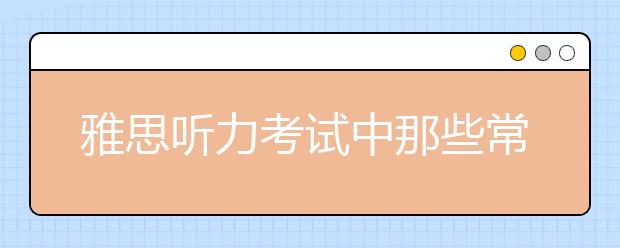 雅思听力考试中那些常用的“标点符号”
雅思听力考试中那些常用的“标点符号”